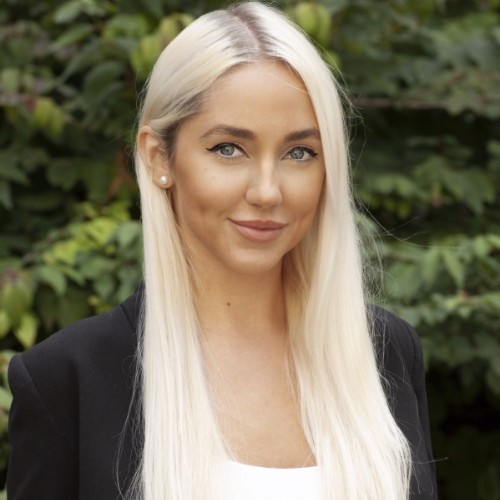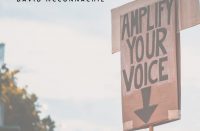Elon Musk ranked the second richest person in the world.
Source: Shutterstock
Mr. Musk did it again. Tech giant has become ranked the second richest person in the world right behind Amazon founder Jeff Bezos. He jumped the ranks after Tesla stocks boomed from $7.2bn to $128bn.
Tesla is considered the most valuable car firm in the world, but manufactures only a portion of the cars that Toyota, VW, and GM make. With only a vision of growth going forward, Tesla is looking to expand in Europe as the car trends seem to be geared towards smaller vehicles.
Tesla is now considered the biggest new entrant on the S&P 500, with more than a $500bn market value, this sparked a buying frenzy into the electric giants car shares. Musk has even more exciting news as four astronauts launched off to the International Space Station by SpaceX, which is another one of Elon’s tech ventures.
Salty Treat: Don’t let moose lick your cars.
Source: Unsplash
As if this is not the most Canadian thing you have heard yet? Officials warn drivers to not let moose lick the salt on your car. The moose enjoy the road salt splashed onto cars as a treat and they are having a hard time resisting this salty snack.
Jasper National Park officials warn that this poses a great threat for moose and drivers, as it allows the animals near your car and become socialized enough to approach vehicles over time. This poses a great threat as it can cause fatal road accidents if in a collision with a moose.
Moose are especially dangerous in collisions due to their large size and they can often charge if they feel threatened – avoiding human interaction is the best for the wellbeing of wildlife. In order to protect the animals, fines of up to $25,000 can be faced for visitors found disturbing wildlife.
Jaspers National Parks spokesperson Steve Young states “Moose and cars are not a good mix. If you hit the moose with your car, you take the legs out from under it and it’s going through your windshield.” We hope this does not become a greater issue and that the moose stay away from the salty snack.
Less Kids Means…?
This week, the Guardian announced a new research survey which shows many young adults hold a pessimistic view of our future climate, and this is influencing their decision to have children.
Researchers surveyed 600 individuals between the ages of 27 and 45. Results suggest that a significant amount of people have reconsidered having children due to the grim future of climate change. More specifically, the study found that 67% of people were very or extremely concerned for the wellbeing of their potential future children in a climate apocalypse world.
One study participant said, “I feel like I can’t in good conscience bring a child into this world and force them to try and survive what may be apocalyptic conditions.”
Lead researcher, Matthew Schneider-Mayerson, of Yale-NUS College in Singapore, said that survey participants were less concerned with the carbon footprint of having children as they were with the wellbeing of the child. Schneider-Mayerson said, “The fears about the carbon footprint of having kids tended to be abstract and dry… But the fears about the lives of existing or potential children were really deep and emotional. It was often heartbreaking to pore through the responses – a lot of people really poured their hearts out.”
A 42-year-old participant wrote that 2050 would be “a hot-house hell, with wars over limited resources, collapsing civilisation, failing agriculture, rising seas, melting glaciers, starvation, droughts, floods, mudslides and widespread devastation.”
Should anyone tell them about the relationship between overpopulation and climate change?
Thermochromic Window
SOURCE: Design Boom
This week, scientists from the U.S. department of energy’s national renewable energy laboratory unveiled a new breakthrough in energy technology: the thermochromic window.
The window works by changing colour (this takes about seven seconds) to block the sun on warm days, in turn, preventing the room inside from heating up. Simultaneously, as the window changes colour, it “leads to the formation of a functioning solar cell that generates on-board power… not only would the buildings use less power, but they would also generate it.”
This technology “reduces the need for air conditioning while simultaneously generating electricity.” With 39% of all energy in the U.S going to cooling residential and commercial buildings, this is an energy breakthrough.
While an interesting idea, I have some questions.
Not only is “natural light” a selling feature in houses, an increase in natural light in one’s home has proven to have numerous mental and physical health benefits including reducing seasonal depression, aiding in sleep, and improving overall happiness levels. With tinted windows preventing sunlight from entering a home, I wonder if this is such a great idea?
White Giraffe Sighting & Efforts to Keep it Safe
Source: CBC News
An extremely rare white giraffe has been fitted with a tracking device for its protection after its family was killed by poachers. The giraffe currently resides at the Ishaqbini Hirola Conservancy in southeast Kenya and has a rare skin condition (leucism) which caused partial loss of pigmentation on the skin. The Northern Rangelands Trust said in a statement this Tuesday that the giraffe was fitted with a tracking device for its own protection – so rangers can monitor its movement on a daily basis. The trust says it is the world’s only white giraffe, although according to National Geographic (NatGeo), another one was spotted in Tanzania in 2015.
The unusual coloration makes the giraffe extremely vulnerable to poachers in the wilderness. According to the trust, two other white giraffes in the conservancy, a female and her calf, were killed by poachers back in March and concerns are mounting for the remaining animal. Giraffes are being hunted for their tails, pelt, bones and meat. NatGeo published an article a while back about poachers in the Democratic Republic of the Congo hunting giraffes for their tails as they are thought to be a status symbol – leaving the body behind.
Giraffes are slowly disappearing worldwide. The African Wildlife Foundation estimates the species has lost 40 percent of its population in just 30 years, and recent reports show poaching and wildlife trafficking are contributing to this decline. Hopefully the tracker will keep this one alive.
How UK chicken is linked to deforestation in Brazil

Greta Vaivadaite is a Journalist, Online Editorial and Social Media Coordinator at Alternatives Media. Greta has completed her undergraduate studies at York University in Environmental Management, and completed her Masters of Environment and Sustainability at Western University in 2020. Her professional interests lay in advocating for environmental education, sustainable fashion, and a greener travel industry.

Alexandra completed her Masters degree in Environment and Sustainability at Western University. She also holds a Bachelor’s of Science from the University of Windsor with Honours in Environmental Studies, where she concentrated in Resource Management and was actively involved in undergraduate research. Outside of academia, she enjoys hiking, camping, and spending her summers on the beach in Prince Edward Island.













